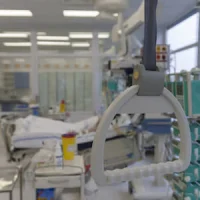Clinical manifestation and outcomes of patients with COVID-19 vary significantly. Most patients experience mild disease, but among those who are critically ill, there can be respiratory and cardiac complications. These can cause malignant arrhythmias and hypoxia and could lead to cardiac arrest and death.
In case of in-hospital cardiac arrest, CPR is the most obvious choice of life support to achieve a return of spontaneous circulation. However, outcomes after return of spontaneous circulation are often poor. Only about one in three critically ill patients with pneumonia or sepsis survive to hospital discharge. Also, these interventions are even more complicated in COVID-19 patients because of the need for personal protective equipment and large patient volumes that have created resource constraints.
Nevertheless, studies show that cardiac arrest is an important cause of death among patients with COVID-19. A study was conducted to investigate the incidence, characteristics and outcomes of in-hospital cardiac arrest in patients with COVID-19 within the ICU compared with in-hospital cardiac arrest in non-ICU patients. Eight studies reporting on in-hospital cardiac arrest were included. Cardiac arrest was defined by the absence of a pulse, measurable blood pressure, unresponsiveness and commencement of CPR.
The primary aim of the study was to evaluate the incidence of in-hospital cardiac arrest in patients with COVID-19. Secondary aims included the analysis of the incidence, characteristics and outcomes of IHCA in the ICU versus non-ICU setting and examining the frequency and outcomes based on age.
Findings showed that in-hospital cardiac arrest incidence varied between 1.5% and 5.8% among hospitalised patients and 8-11.5% among patients in the ICU. The analysis also showed that in-hospital cardiac arrest was more common in older male patients. Most initial rhythms were non-shockable. There was a return of spontaneous circulation in 33.3% of patients with a 91.7% in-hospital mortality. Incidence of return of spontaneous circulation was higher and mortailty was lower in in-hospital cardiac arrest events in ICU compared with in-hospital cardiac arrest in non-ICU locations. In-hospital mortality was higher in patients 60 years or older compared to those under the age of 60.
Overall, study findings show that one in 20 patients hospitalised with COVID-19 received resuscitation for an in-hospital cardiac arrest. Survival after in-hospital cardiac arrest within the ICU was higher compared to non-ICU locations. However, patients with COVID-19 and IHCA managed in the ICU had similar outcomes compared to patients suffering an IHCA before the pandemic. But mortality was higher among IHCA events that occurred in non-ICU locations.
Source: Critical Care Medicine
Image Credit: iStock










